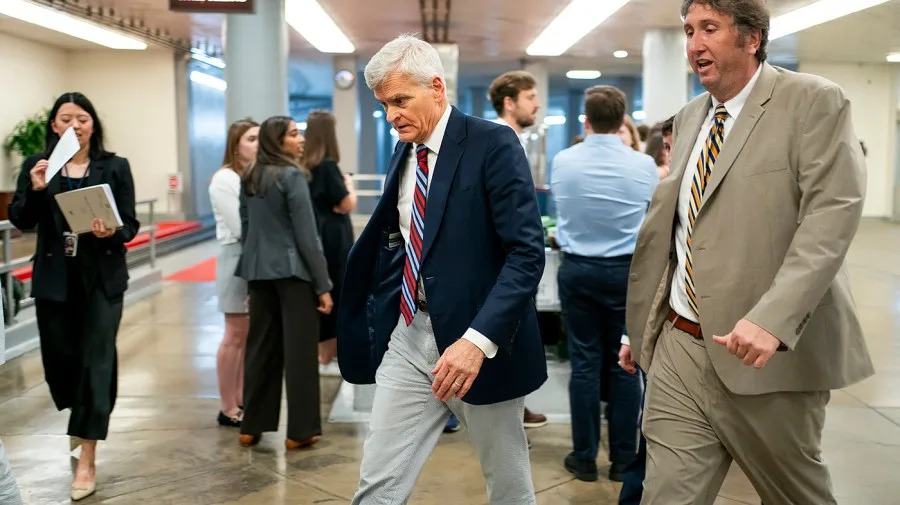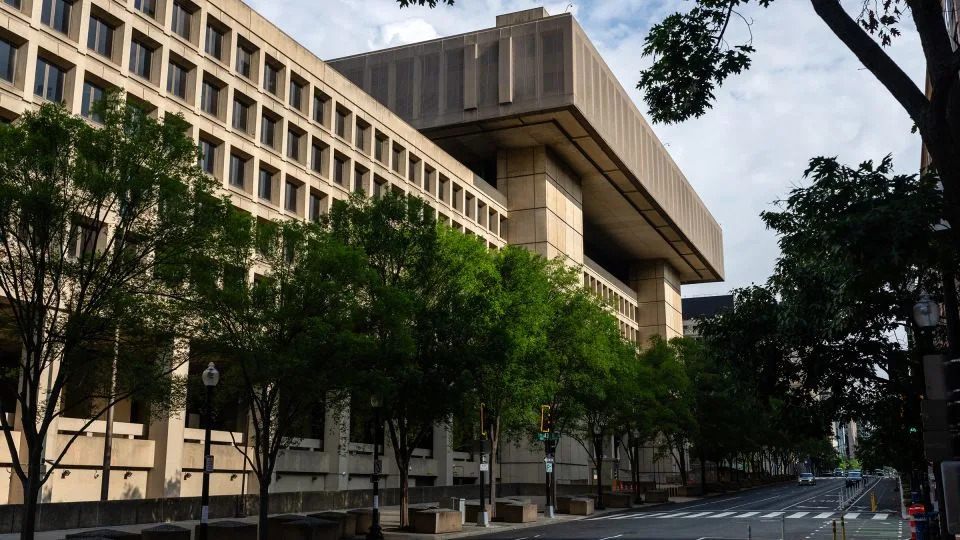
A bipartisan duo in the Senate has been garnering attention for a pitch aimed at shoring up the solvency of Social Security.
The idea, pushed by Sens. Bill Cassidy (R-La.) and Tim Kaine (D-Va.), calls for investing $1.5 trillion over the next five years into an investment fund that would then be given 70 years to grow.
“It is something to save Social Security and to save the benefits flowing to the people, frankly, will either already depend on them or will depend upon them going forward,” Cassidy told The Hill last month.
Here’s what lawmakers – and some experts – have said so far.
How it works
While the senators have yet to release text for the plan, Cassidy said the government would create an investment fund separate from the existing Social Security trust funds, into which the government would place $300 billion annually over the next five years.
That money would be invested into stocks, bonds and other investments, and Cassidy said it would be held “in escrow for 70 years.”
“Any dividends being paid, for example, flow back into the investment fund. As that occurs, we also repeal the law requiring that benefits be cut to match income,” Cassidy told The Hill.
The Treasury Department would be responsible for making up the payments for those 75 years, at which point the fund would pay back the Treasury Department and use its remaining funds to supplement Social Security payments, according to the senators.
Cassidy argued the plan would not add to the national debt, which currently stands at well over $30 trillion.
“The reason is that if you have money in an escrow account, you could always just empty the escrow account and pay off the Treasuries required to do the initial funding,” he said. “And so, even though we’re borrowing that money, it does not increase our nation’s indebtedness and the investment income will exceed the interest that accumulates on the money borrowed.”
Cassidy estimated the plan could “generate at least 70 percent of the borrowing required to pay the benefits over the next seven decades.”
What are the next steps?
The senators have said they’re still collecting input on their plan, but the pitch is similar to a previous effort headed up by Cassidy that involved a coalition of senators from both sides of the aisle.
“In a previous Congress, we had seven Republicans and seven Democrats. We’re putting that coalition back together,” Cassidy said. As the senators continue to “socialize” the idea, Cassidy said there’s more than a handful of Republicans that have said “they will openly support or they look forward to supporting, but they just plan to learn a little bit more.”
“We really felt like we have to socialize the idea more before we get down to legislative draftsmanship,” Kaine also said of the idea, noting they’ve been hearing feedback from some experts.
“I think that if I had to summarize feedback, it would be this can be a really important part of our solution,” Kaine told The Hill. “It probably is not the entire solution, which we know.”
Kaine said turning around a projected shortfall for the program in the next decade will likely “take a bunch of different things,” but said the plan “can be a really important ingredient that nobody was really thinking about.”
“And then that makes the path towards solvency a little bit easier,” he added, suggesting the “novel” idea being explored by him and Cassidy could mean Congress doesn’t have to look to more “painful” options to extend the lifetime of the program.
The criticisms
While the senators have drawn support over the bipartisan effort and for bringing more attention to the subject, some experts have raised questions over the pitch.
In a collection of some reactions from retirement experts published by the Briefing Book last month, voices from prominent think-tanks American Enterprise Institute (AEI) and the Brookings Institution weighed in on the plan.
“Senators Bill Cassidy and Tim Kaine deserve praise for drawing public attention to Social Security’s funding shortfall,” Sita Nataraj Slavov, a nonresident senior fellow at the American Enterprise Institute (AEI) who focuses on public finance and the economics of aging, said as part of the piece. “Unfortunately, their proposal does not improve the program’s finances because it avoids imposing the tax increases or benefit reductions that are necessary to keep it solvent.”
Gopi Shah Goda, director of the Retirement Security Project and a senior fellow at Brookings, also said in the piece that borrowing funds as suggested in the senators’ plan “would likely raise interest rates and slow growth, and avoids the difficult but important work of modernizing the program so that it can continue to provide important protection to seniors in a sustainable manner.”
In an interview on Tuesday, Andrew Biggs, a senior fellow at the AEI focused on Social Security reform, compared the idea to a “pension obligation fund” seen in some states.
“The only thing that has to happen for this to lose money is for stocks to earn a lower return than bonds,” he said.
“States that have tried these pension obligation bonds, some of them come out ahead. Some have lost money,” he said. “It’s a risky proposition.
Social Security’s go-broke date
In their annual report released in June, a board of trustees of the program’s accounts found that the combined trust funds for Social Security are projected to run out in 2034.
The report projected that the program’s Old-Age and Survivors Insurance (OASI) fund would be able to cover “100 percent of total scheduled benefits until 2033,” while the Disability Insurance (DI) trust fund is estimated to be able to pay “100 percent of total scheduled benefits through at least 2099.”
But when the projections are combined, the resulting fund is estimated to only be able to cover “100 percent of total scheduled benefits until 2034, one year earlier than reported last year. The report cited last year’s passage of legislation repealing two key tax rules as a key factor behind the timeline shift, projecting the law would lead to increased benefit levels for some workers.
However, that timeline could get even tighter after the recent passage of Trump’s “big, beautiful bill.” The Trump administration’s chief actuary for the program released an estimate this week projecting the trust funds will begin to see lower levels of tax revenue of Social Security benefits starting this year.
With the recent tax changes, the Office of the Chief Actuary at the Social Security Administration projected depletion of the combined OASI and DI trust funds will accelerate from “the third quarter of 2034” under the recent board of trustees’ report baseline to “the first quarter of 2034 following implementation of the law.”
What are the chances of Social Security action this Congress?
While there’s support on both sides of the aisle for ways to shore up solvency for the program, changes to the program or how it’s funded is a heavy lift in Congress.
Cassidy, who sits on the Senate Finance Committee, said he’s spoken to the chairman about a potential hearing on the legislation.
Others are hopeful of further action on Social Security.
“We all want to do something about it before the deadline,” Sen. Angus King (I-Vt.) said when asked about the plan, but added it “would be ahistorical” to see action to help shore up solvency for the program in this Congress.
“The last time, when Tip O’Neill and Ronald Reagan fixed it, my understanding is they were about six months from insolvency. So, maybe we are going to have to wait that long, but I hope not,” King said, noting “the longer we wait, the harder it is to fix.”
“I’m hoping that we can. As I say, there are a number of different discussions going on,” said King, who previously headed up the bipartisan effort with Cassidy in 2023. While King said he is “not involved at this point,” he added that he is “listening and there are several groups that are talking about Social Security.”
“Everything is difficult in every Congress, it seems especially difficult these days. And the closer we get to an election, the less results I think we get,” Sen. Jerry Moran (R-Kansas) also said last week. “But there is a certain demand for efforts to make sure that Social Security is solvent today and in the future.”
“But they will be hard to come by,” he added.
Copyright 2025 Nexstar Media, Inc. All rights reserved. This material may not be published, broadcast, rewritten, or redistributed.
For the latest news, weather, sports, and streaming video, head to The Hill.








Comments